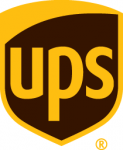After facing overcapacity and under-capacity issues the past couple of peak seasons, UPS hit the nail on the head in 2015.
The company reported $2.17 billion in operating profit for the fourth quarter of 2015, up 17.1% from 2014 and the highest ever for the period, and a whopping 193.8% increase in net income to $1.33 billion, as ecommerce business helped drive a record 612 million parcels during peak season, another record. This was 47 million more packages than the prior year.
“Although the industrial side of economy has slowed, the explosive growth of ecommerce continues to create great opportunity,” UPS CEO David Abney told investors and analysts on a conference call.
The company’s domestic package, international package and supply chain and freight units all reported double-digit profit increases in the quarter vs. 2014, even as the company hired about 93,000 seasonal workers – another record – to handle peak demand.
UPS is now doing about half its business in residential deliveries, i.e. ecommerce orders, which grew to 60% during peak season, said Chief Commercial Officer Alan Gershenhorn.
Abney said that greater collaboration with UPS customers, pricing controls, investments in automation and network optimization efforts – like moving up its peak demand day at the tail end of the holiday rush to smooth out volume – helped drive both top- and bottom-line growth.
“This year, our customers worked more closely with us than ever and I want to thank them for making adjustments and being flexible,” he said. “Together, we delivered a successful peak season.”
On the control side, Abney said UPS worked to tighten its dispatching, reduce special sorts and implement just-in-time hiring to cut costs. The company also expanded capacity, including its 8,000 UPS Access Point locations in the U.S., and completed several network automation projects.
“These investments provide year-round benefits,” Abney said. “In fact, our automated air facilities were essential in servicing nearly 13% growth in U.S. domestic air volume during the quarter. The flexibility of our integrated network also gave us the control needed to seamlessly move volume between air, rail and ground to maintain excellent on-time service.”
Abney also said the company also leaned on its “control tower” management process to handle unplanned volume surges by efficiently utilizing available network capacity. In 2015, the process was expanded beyond the U.S. to Canada and Europe. “Our goal was to find a solution that worked for our customers and UPS,” he said. “Working together, we were able to service more than 90% of these last-minute requests.”
Gershenhorn said there were some shipping requests turned away in the final days of peak seasons, but some came from “dual-source customers who chose not to make longer-term business commitments to UPS.”
Asked about growing reports that Amazon is moving heavily into logistics operations, with some speculating it plans to muscle out the major carriers because of past seasonal snafus, Abney said the ecommerce giant remains a major customer and ally. The latest evidence of this initiative is Amazon for the first time listing itself as a transportation service provider in its annual 10K filing.
“We have a mutually beneficial relationship,” he said. “And our goal with Amazon or any other big customer is to continue to show our value through the integrated network and through our technologies and to have a value proposition that’s difficult to match. We do add capacity and for large customers such as Amazon, we do it though we ensure we have the proper economic return. And at the same time, we also ensure the integrity of our network for all customers by planning and forecasting our volumes.”
He added none of this will affect UPS’s competitive pricing dynamics, here or abroad.

